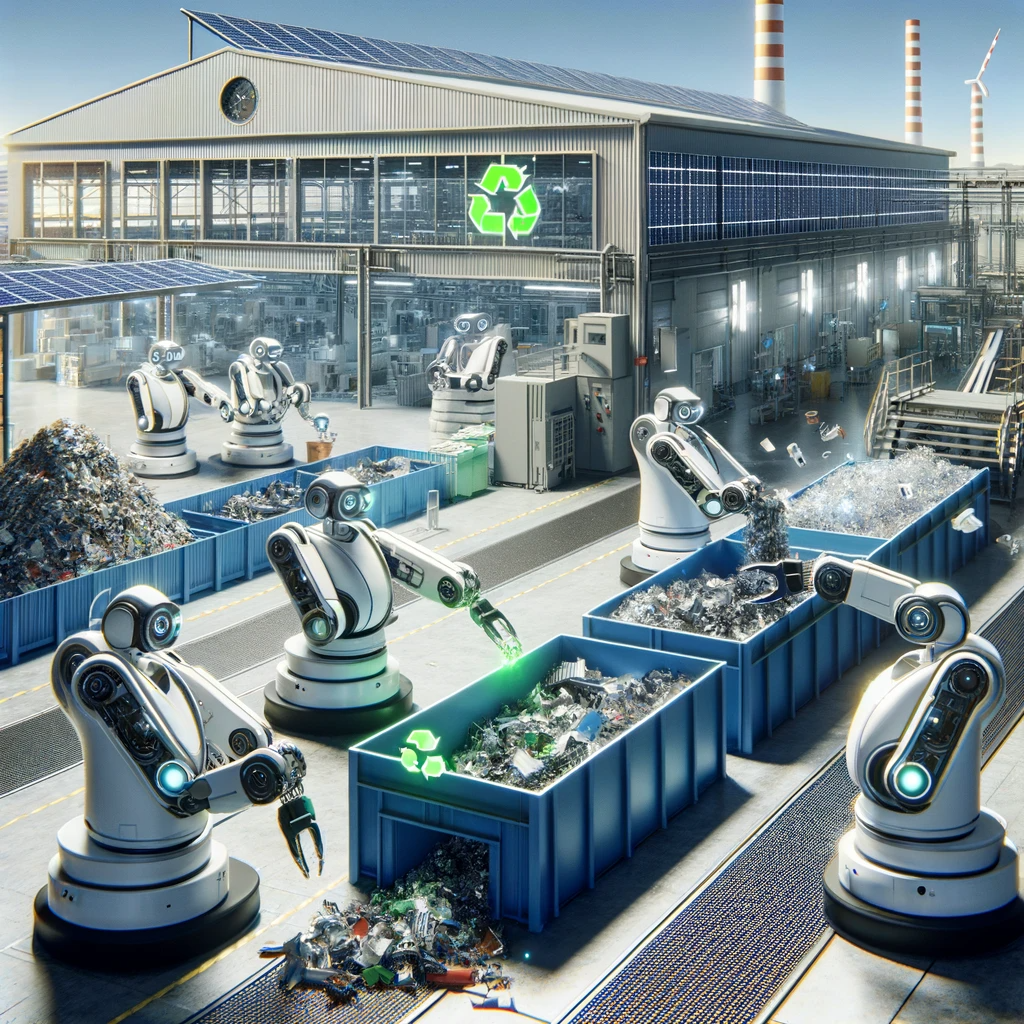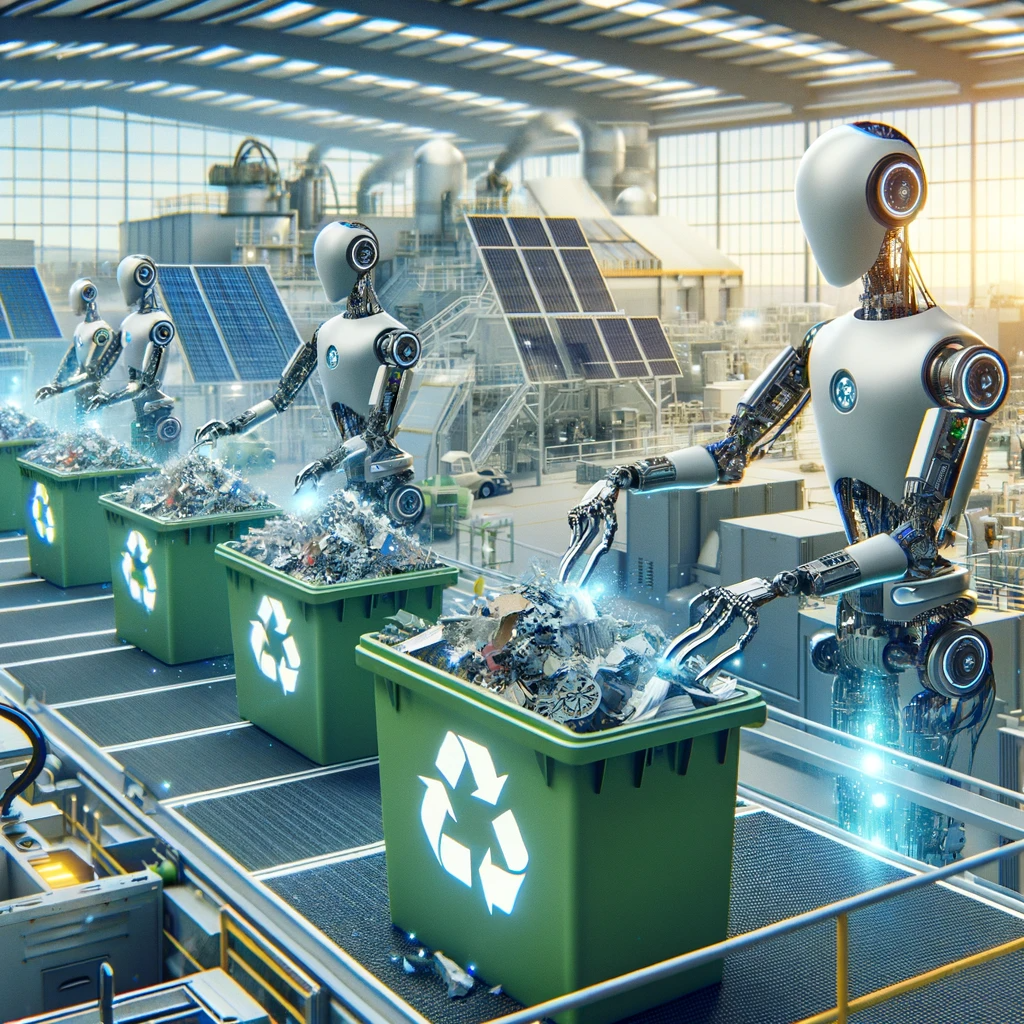In an era where environmental sustainability has become a global imperative, manufacturing industries find themselves at the crossroads of innovation and responsibility. The world is striving for a future where waste is minimized, resources are conserved, and ecological footprints are reduced. Achieving these ambitious sustainability goals requires a paradigm shift in manufacturing practices, and Artificial Intelligence (AI) is emerging as a powerful ally in this endeavor.
Manufacturing industries have long been associated with substantial waste generation, from excess materials and defective products to energy inefficiencies. However, the pursuit of zero-waste manufacturing represents a revolutionary concept that envisions a world where every resource is used efficiently, and waste becomes a relic of the past. This transformation is driven by a commitment to environmental stewardship, cost savings, and the ethical responsibility to leave a greener planet for future generations.
This article delves into the promising intersection of AI and manufacturing, exploring how AI technologies can propel industries toward the ambitious goal of zero-waste manufacturing. We will unravel the concept of zero-waste manufacturing, elucidate the pivotal role of AI in this context, present real-world case studies, address the challenges and ethical considerations, and cast a glance into the future of sustainable manufacturing practices. As we embark on this journey, it becomes evident that AI has the potential to reshape the manufacturing landscape, ushering in an era where sustainability is the cornerstone of industry excellence.
Understanding Zero-Waste Manufacturing

Zero-waste manufacturing is a visionary concept that aims to eliminate waste production and minimize the environmental impact of industrial processes. This approach revolves around the idea that every resource, be it raw materials, energy, or by-products, should be utilized efficiently, leaving no room for waste to accumulate. Key points to consider include:
- Defining zero-waste manufacturing: A comprehensive definition of what zero-waste manufacturing entails, emphasizing the reduction of waste to near-zero levels.
- The environmental and economic benefits: Highlighting the advantages of zero-waste practices, including reduced environmental pollution, decreased resource consumption, and potential cost savings for businesses.
- Challenges in transitioning to zero-waste practices: Acknowledging the hurdles that industries face when striving for zero-waste, such as changing established workflows, investing in new technologies, and shifting organizational culture.
The Intersection of AI and Manufacturing
The convergence of AI and manufacturing represents a significant leap forward in industrial practices. This section explores the symbiotic relationship between AI and manufacturing:
- AI’s transformative impact on manufacturing: Discussing how AI technologies, including machine learning and robotics, are revolutionizing traditional manufacturing processes.
- The rise of Industry 4.0 and smart factories: Exploring the concept of Industry 4.0, characterized by interconnected smart systems and AI-driven automation, and its implications for sustainable manufacturing.
- AI-driven insights and decision-making in production: How AI algorithms analyze vast datasets to optimize manufacturing operations, enhance quality control, and predict maintenance needs.
Reducing Waste Through AI
This section delves into the specific ways in which AI can contribute to waste reduction in manufacturing processes:
- Predictive maintenance and minimizing equipment failures: How AI-driven predictive maintenance systems can prevent costly equipment breakdowns and reduce unplanned downtime.
- Quality control and defect detection: The role of AI in identifying defects in real-time, minimizing the production of faulty products, and enhancing overall product quality.
- Inventory optimization and waste reduction: How AI algorithms can optimize inventory levels, reducing overproduction and unnecessary stockpiling of materials.
- Energy efficiency and resource conservation: The contribution of AI to energy-efficient manufacturing and the conservation of vital resources, such as water and materials.
Case Studies and Success Stories
Real-world examples provide concrete evidence of AI’s effectiveness in reducing waste in manufacturing processes:
- Real-world examples of AI-driven zero-waste manufacturing: Case studies from various industries showcasing the successful implementation of AI for waste reduction.
- Industries leading the way in sustainability: Highlighting sectors and companies that have embraced AI-driven sustainability and reaped substantial benefits.
- Quantifiable results and environmental impact: Providing data and statistics on waste reduction, cost savings, and environmental improvements achieved through AI in manufacturing.
Overcoming Challenges and Adoption Barriers
While AI offers immense potential, it’s not without its challenges and obstacles to widespread adoption:
- Cost and resource constraints: Addressing the financial investment required for implementing AI technologies and the availability of resources.
- Workforce skill requirements: The need for skilled personnel to operate and maintain AI systems in manufacturing.
- Integration of AI technologies into existing systems: Overcoming compatibility issues and integrating AI seamlessly into established manufacturing processes.
- Regulatory and compliance considerations: Navigating regulatory requirements and ensuring AI-driven manufacturing adheres to environmental standards and legal frameworks.
AI for Sustainable Supply Chains
Sustainability in manufacturing extends beyond factory walls, encompassing supply chains:
- Extending sustainability beyond manufacturing plants: Discussing the significance of sustainability practices throughout the entire supply chain.
- Transparency and traceability in the supply chain: How AI can provide transparency and traceability, allowing companies and consumers to track the origin and environmental impact of products.
- Collaboration with suppliers for waste reduction: The role of partnerships and collaboration with suppliers in achieving sustainability goals and minimizing waste throughout the supply chain.

Ethical and Social Considerations
As AI-driven automation advances, ethical and social considerations come to the forefront:
- Addressing labor concerns in automated manufacturing: Ensuring that the introduction of AI does not lead to job displacement or unfair labor practices.
- Ensuring fair and ethical practices: The importance of maintaining ethical and fair treatment of workers and stakeholders in AI-driven manufacturing environments.
- Community engagement and environmental justice: The role of manufacturing industries in engaging with communities and addressing environmental justice issues associated with their operations.
Future Prospects and Innovations
The future holds promising innovations at the intersection of AI and sustainable manufacturing:
- Evolving AI technologies in manufacturing: Predicting the trajectory of AI technologies and their potential for further waste reduction and sustainability gains.
- Integration with renewable energy sources: How AI can be harnessed to optimize the use of renewable energy sources, further reducing the environmental footprint of manufacturing.
- Circular economy models and resource recovery: Exploring circular economy models where waste materials are recovered and repurposed, closing the loop on resource utilization.
Conclusion
As industries seek to embrace sustainability and achieve zero-waste manufacturing, AI emerges as a critical ally in this transformative journey. By addressing waste at its source, optimizing processes, and fostering innovation, AI is ushering in a new era of responsible manufacturing. The collective effort of industries, governments, and communities is needed to realize a future where waste is minimized, resources are conserved, and manufacturing aligns with the principles of sustainability. In this context, AI is not just a tool but a catalyst for positive change, propelling us toward a greener and waste-free future in manufacturing.
